Most custom motorcycle builders are pretty handy in other areas of life and work too. The ability to set up a lathe or tune an engine lends itself to many other areas of craftsmanship. And if you’ve got a knack for aesthetics, you can probably also design (and print) a t-shirt.
But one trend that’s caught us by surprise is the number of furniture designers who can also build very classy bikes. One such Renaissance man is Samuel Aguiar of Shiny Hammer, who created the elegant ’72 FLH shovelhead we’re looking at here.
The Frenchman is in good company: Stefano Venier and George Woodman both major in furniture design, and there are probably others we haven’t come across.
We first spoke with Samuel a year ago, when he dazzled us with his streamlined electric projectile ‘Hope.’ But this time, he’s swung the other way—choosing iconic Milwaukee metal as the base for his latest build.
“The idea was to make a low and narrow chopper with trials-type wheels,” says Samuel. It’s an unorthodox approach, but it looks stunning.
He’s modified the back of the Shovelhead frame to create a slim and straight profile: it’s now about two inches lower and 1.5 inches narrower than when it left the Milwaukee factory in 1972.
“I was looking for a solution to integrate the rear suspension into the frame,” Samuel explains. “I wanted only the engine to ‘pop’ out of the frame, so I ended up using oleo-pneumatic shocks and a one-off geometry.”
The shocks use technology more often found on aircraft landing gear, and are made by Forunales, an oleo specialist based in Toulouse.
Samuel tackled the fuel tanks next. “I had in mind a triangular shape, which would fill the empty space between the engine and the chassis.” After building two mirror-image tanks, the capacity turned out to be 6.5 liters (just over 1.7 US gallons).
“I wanted around eight liters on this Shovelhead, so I came up with the idea to add a another tank under the seat, next to the custom oil tank.” The end result is eight liters for fuel, and four liters (4.2 quarts) left for the oil.
The three fuel tanks are connected by lines that run both under and over the chassis, “to communicate as one, and breathe, to be able to work.”
A long, ribbed black leather seat segues into a stubby rear fender, which finishes off the flowing lines just perfectly. It’s based on the stock FLH fender but considerable shorter, and with an inch trimmed off the width. The taillight sits snugly underneath the upkick, embedded into a one-off stainless steel surround.
Samuel has fitted the Big Twin with an S&S Super E carb, a go-to solution for Shovelhead engine tuners seeking better throttle response and more power. It’s one of the few bolt-on parts on this Harley, aside from the open primary belt drive and KustomTech forward controls.
The air filter is custom, and Harley devotees will also notice that Samuel has split the rocker boxes—a classic but tricky and time-consuming mod on old Shovelheads.
This sinuous, snaking exhaust system is the part that catches the eye the most, though. “The inspiration was to imagine how the smoke would flow if riding the bike without any exhaust pipes,” Samuel says.
“So the pipes ‘swirl’ out of the heads, and become more and more straight as they head towards the rear of the bike.” The material is polished stainless steel.
Samuel then took a breather from the workshop, and started riding the shovel—without paint, and with a regular telescopic fork. “I thought, looking at the bike, that the front wasn’t special enough when compared to the rest of the mods.”
He ended up spending 300 hours of learning and working to create a one-off girder fork. “I wanted it to be narrow, and I especially to integrate the arms inside the fork, and not outside—as it usually is.”
“I went through sketching, measuring, testing with cardboard, 3D modeling, machining and welding. I wanted the geometry to have less trail, with the wheel moving as vertically as possible. I kept the same wheelbase as stock.”
After completing and installing the impossibly elegant forks, Samuel turned to the wheels. After machining up new hubs, he installed a set of hoops from a Husqvarna 125 enduro bike, in F21/R18 sizes. They’re made by Excel, and are a ton lighter than regular FLH rims.
The brake calipers are Nissin, liberated from Honda and Suzuki bikes, and hooked up to a Beringer master cylinder. The headlight is hardly any bigger: rather than go down the classic Bates route, Samuel has built a compact LED unit, and tucked it away between the girders.
After polishing every square millimeter of the wheels, Samuel installed Pirelli MT43 rubber—a trials-pattern tire that also works on hard surfaces and is DOT-approved for road use.
The chunky rubber adds a bit of visual grit to what is otherwise a sleek and immaculately finished Shovelhead. M. Aguiar might go a whole year between bike builds, but they’re sure worth the wait.
Shiny Hammer | Facebook | Instagram
from Bike EXIF https://ift.tt/2Btu5AL
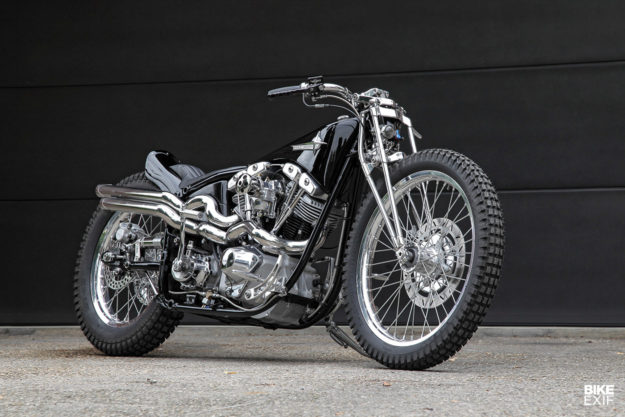
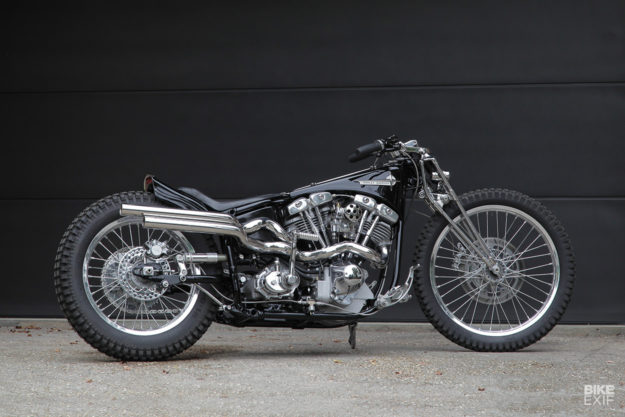
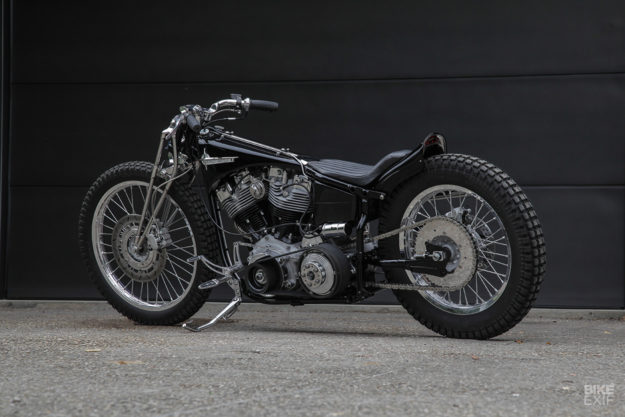
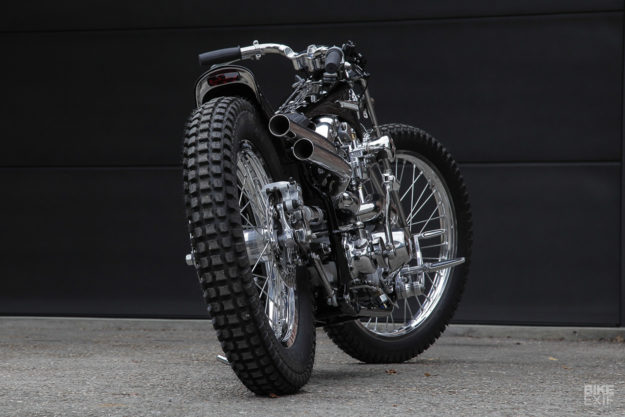
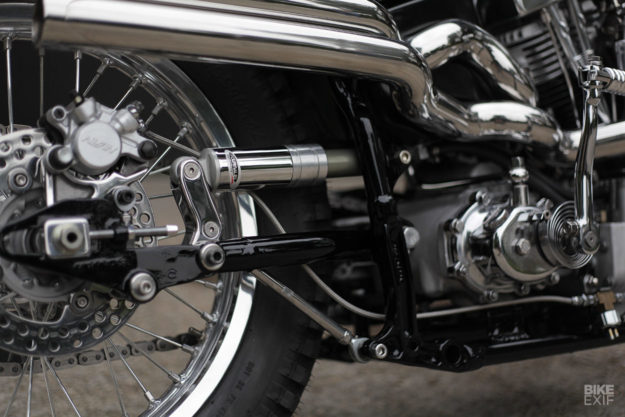
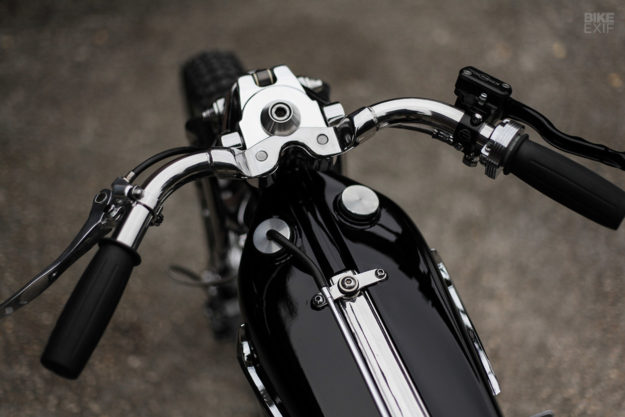
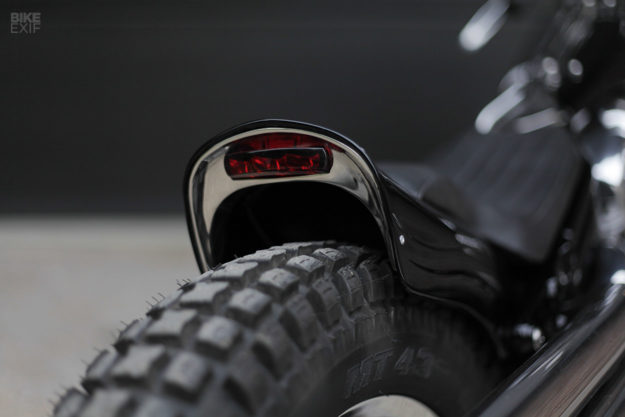
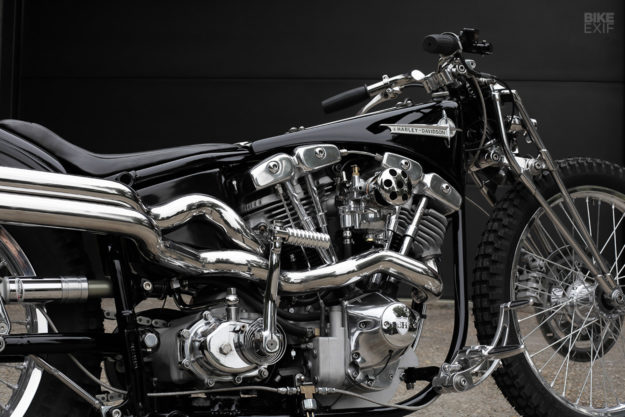
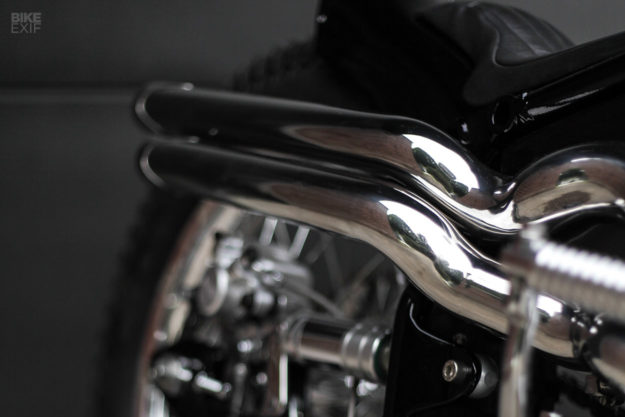
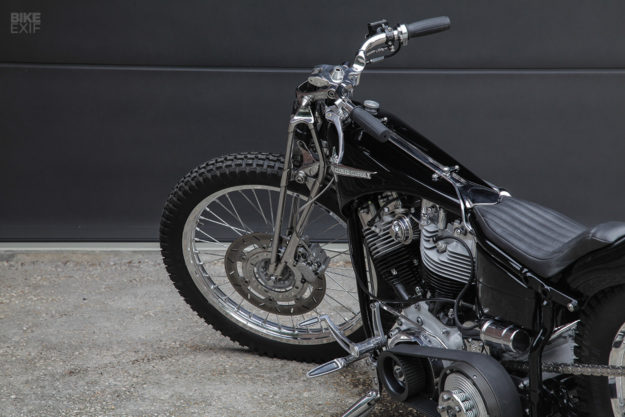
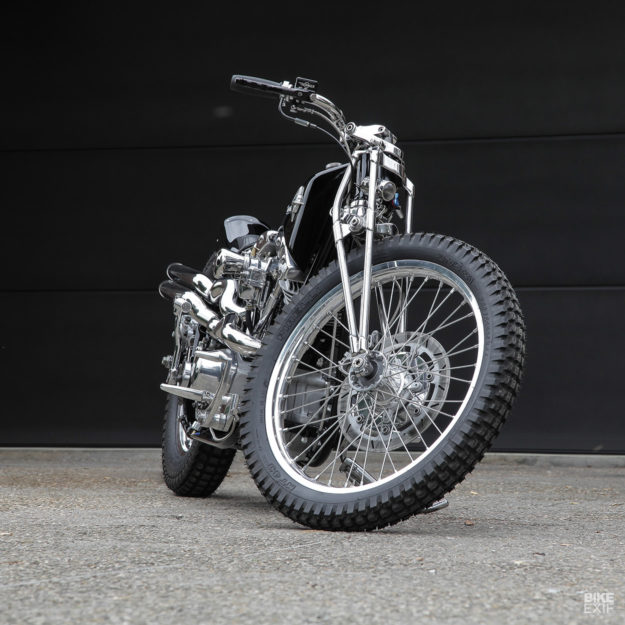
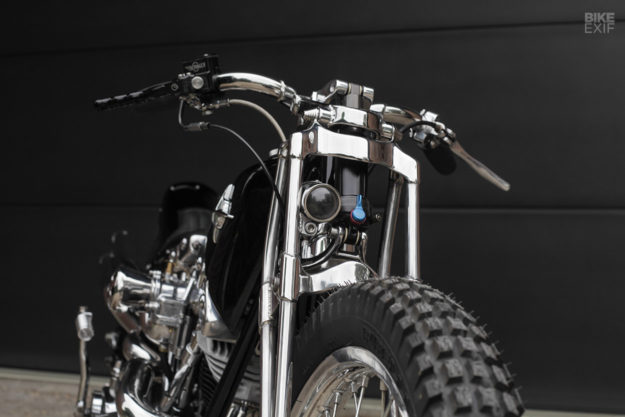

No comments:
Post a Comment